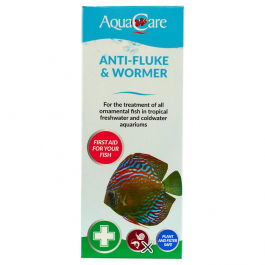TwoTankAmin
Fish Connoisseur
The directions for this med clearly state: "it should not be used in aquariums that contain invertebrates," They also say to return carbon or zeiolite to the filter after the treatment. I know that for some meds there is information about how long they are effective after being dosed. Some are gone pretty fast while others persist for a while. I found nothing in this respect regarding this med.
Some folks will say that corys do not have scales. However, what they do have are scutes which are a modified form of a scale. The result is some meds should not be used with scaleless fish are not safe for corys while others meds which say not to use with scaleless fish are safe for corys. You should actually be able to contact the company and ask them this question specifically.
I saw no slime coat issues in your vid and only noticed one cory doing any flashing.
I would use this med instead which I can buy in the states, but I am not sure you can get it in the UK easily or at all. It has neither copper nor formaldahyde.
My guess is you need a vet to get this med in the UK
Some folks will say that corys do not have scales. However, what they do have are scutes which are a modified form of a scale. The result is some meds should not be used with scaleless fish are not safe for corys while others meds which say not to use with scaleless fish are safe for corys. You should actually be able to contact the company and ask them this question specifically.
I saw no slime coat issues in your vid and only noticed one cory doing any flashing.
I would use this med instead which I can buy in the states, but I am not sure you can get it in the UK easily or at all. It has neither copper nor formaldahyde.
Flubendazole 10 % powder
Best for eliminating Hydra. Treats protozoa wasting disease, serious treatment for Velvet, enternal and external parasites, 1/4 teaspoon of 10 % powder treats about 20 gallons of water for most parasitic Protozoa. Eliminate Carbon filtration during treatment. Change most of the water after 10 days. Will not harm plants, Prolonged use will kill most all snails. ........
My guess is you need a vet to get this med in the UK




